Talking about the performance of audio equipment without objective measurements is like describing the taste of food without eating it. Maybe that’s a bit over the top, but the concept is accurate. You’ll hear many folks into high-end audio describe listening experiences that are sweet or emotional. However, those adjectives do very little to describe the physical characteristics of the performance.
Where in the world are we going with this? A combination of several listening tests and lab measurements got us thinking about the Hi-Res Audio product certification. We’ve tested many source units, amplifiers, signal processors, and Bluetooth interfaces that bear this accreditation. What does Hi-Res Audio certification mean? Further, does it mean a product will sound great?
High-Frequency Audio Reproduction
The first part of the certification attempts to correlate extended high-frequency performance with audio resolution. The standard requires amplifiers, signal processors, audio interfaces, source units, speakers, earphones, and microphones to record or reproduce audio frequencies up to 40 kHz.
The inference is that extended frequency response somehow correlates to resolution. In reality, bit depth, in theory, has more to do with resolution than high-frequency performance.
Ask anyone over 30 if they can hear audio frequencies above about 16 kHz, and most will tell you no. Those who think they can ought to have a formal listening test performed. We believe they will be surprised. Most adults we know can’t hear much over 14 kHz.
The argument for capturing audio frequencies above 22.05 kHz (the upper limit of a compact disc) is that harmonics present in the audio change the audible frequency region. While possible, those harmonics will also be present in the recording at audible frequencies. Reproducing them offers no benefit if they can’t be heard. Bats, dogs, cats, rats, mice, owls, and reptiles might appreciate the extra effort and storage bandwidth, but humans won’t.
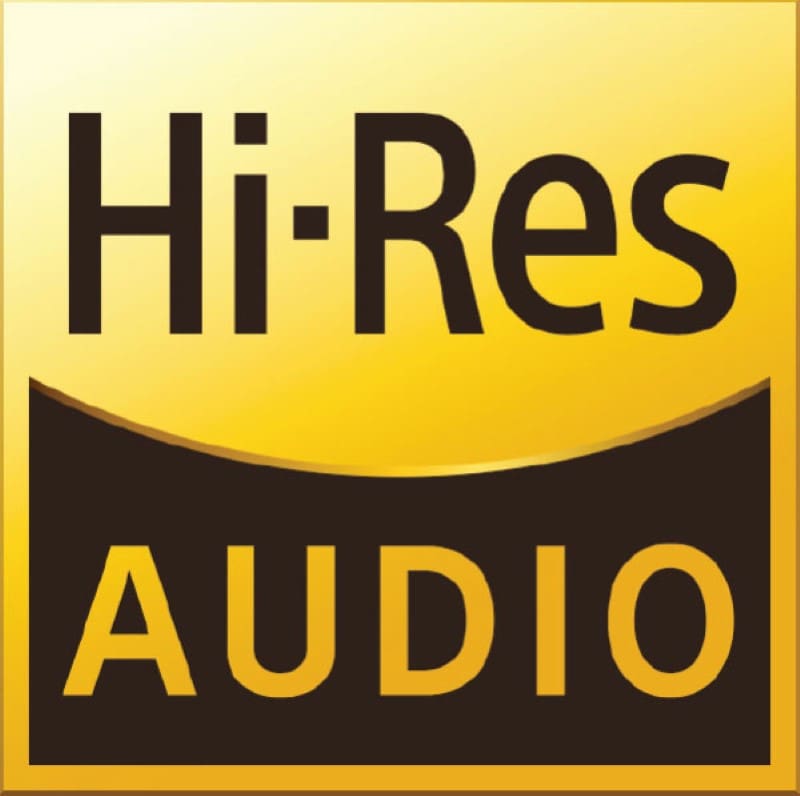
Car audio companies like Alpine, Sony, Kenwood, JVC, JBL, Hertz, Audison and Pioneer pay the Japan Audio Society to present the Hi-Res Audio logo on their products
Benefits of High-Resolution Audio Recording
The most significant benefit of recording higher-frequency content is the overall quality of the recording equipment. A recording studio might have a Universal Audio Apollo audio interface capable of sampling analog audio at 192 kHz with 24 bits of depth. However, those details alone don’t describe the true performance capabilities of the device. The Apollo X8 boasts 130 dB of dynamic range and a THD+N specification of -127 dB. The latter is equivalent to better than 0.0000446% Total Harmonic Distortion and Noise. To put it subtly, that’s ludicrously impressive.
What does this mean for the recording? The recording only captures the audio signal from the microphone at the interface, as the harmonic content added to the signal is imperceptibly low. An order of magnitude worse performance would still be imperceptible. You will get an incredibly clear recording when the engineer mixes dozens of tracks at this quality level.
Actual Bit Depth Comparison
The image below, and dozens like it, are misused in hundreds of applications to infer different quality levels based on bit depth.
The second part of the Hi-Res Audio criteria refers to handling audio files with 24 bits of depth. A common misconception about bit depth is that it also correlates with resolution. In reality, it doesn’t. The benefit of additional bit depth is reducing the noise captured in an audio signal.
Here’s a very real-world example. The image below shows the spectral content of a 1 kHz tone recorded at -80 dB FS, then saved as a 192 kHz, 24-bit file in red. The yellow trace is the same test tone but is saved as a 16-bit file.
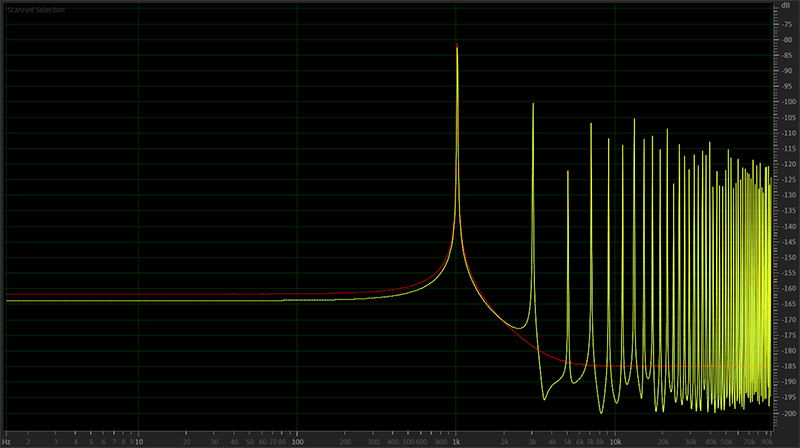
A -80 dB FS test tone was saved as a 192 kHz, 24-bit red track, then a 192 kHz, 16-bit track in yellow.
When we open the file and check the spectral content, we see that a lot of noise has been added to the 16-bit track. Yes, the information is at a very low level of -98.13 dB for the 16-bit file. Crucially, it’s something that wasn’t in the original recording.
When a music producer creates a modern rock or pop song, they might combine 50 to 80 different tracks or samples. Let’s assume it’s only 60 tracks with 16 bits of depth. After typing a really long equation into Microsoft Excel, we get a noise floor of -90 dB FS. With playback levels of 100 dB SPL, which is easily possible from even modestly robust audio systems, the noise in the recording would be audible during quiet passages.
A 24-bit audio file has a noise floor of around -160 dB FS. I won’t bother doing the math, as no source units or amplifiers perform anywhere near that level. Okay, I lied. That’s about -152 dB of noise with 60 tracks combined. Like I said, it’s not audible.
Sound Quality
Unfortunately, for the Hi-Res Audio designation, the most easily perceptible degradation in audio quality is associated with distortion. Harmonic distortion is far more prominent than noise or high-frequency extension. As we’ve explained repeatedly, distortion is the addition of unwanted harmonic content due to nonlinearities in a speaker, amplifier, signal processor, or source unit.
The Japan Audio Society ignores this significant factor in its Hi-Res Audio certification. Their exact statement regarding audio quality is based on a “hearing evaluation” that is “implemented according to each company’s regulations.” Given that few products publish distortion specifications, it’s concerning that a label intended to designate a product as high quality leaves out this critical consideration.
Hi-Res Audio Wireless
What got us all riled up about the Hi-Res Audio designation? It was a culmination of several listening tests of Hi-Res Audio Wireless products. While the efforts put into optimizing wireless audio transmission over Bluetooth are commendable, the degradation the process causes is significant.
Based on our hands-on experience, playing a Hi-Res Audio Wireless format like LDAC or aptX on a premium-quality source unit degrades the performance to well below what you’d hear with a regular run-of-the-mill solution. Nevertheless, we understand the concept and goal – the execution fails miserably.
If you think for a moment that Bluetooth “sounds awesome,” then it’s time to play some music directly from a USB memory stick. The same goes for wireless connections used in Apple CarPlay and Android Audio. Switch to hi-res tracks you’ve purchased and stored on a USB memory stick. If your system can deliver, the difference will blow your mind! If you don’t hear a difference, it’s time for an upgrade.
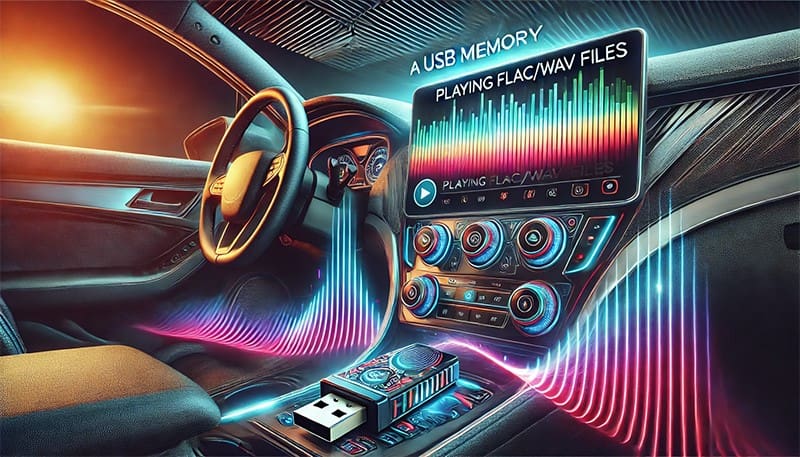
FLAC and WAV audio files stored on a USB memory stick are hands-down the best format for transporting music.
Hi-Res Audio Isn’t Necessarily High-Fidelity Audio
We’ve been incredibly fortunate to have the opportunity to measure and audition audio solutions from all the top brands in the car audio industry. Indeed, many solutions sound magnificent. Unfortunately, many make quality and clarity claims that the hardware can’t substantiate. Some of these products bear the Hi-Res Audio logo.
When it’s time to upgrade your car audio system, drop by a few local specialty mobile enhancement retailers and audition the solutions they offer. If you’ve done some research and listened to the same music in the demo vehicles and on the display boards, picking out what sounds terrific is easy.
This article is written and produced by the team at www.BestCarAudio.com. Reproduction or use of any kind is prohibited without the express written permission of 1sixty8 media.
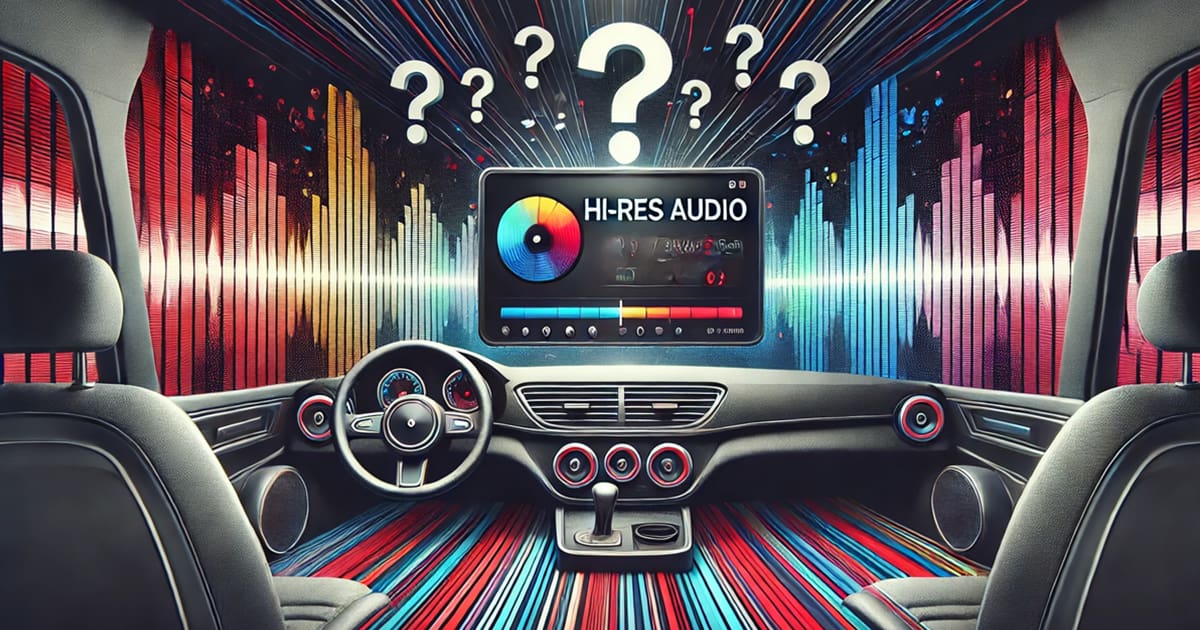

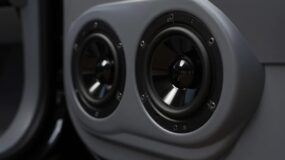

Leave a Reply